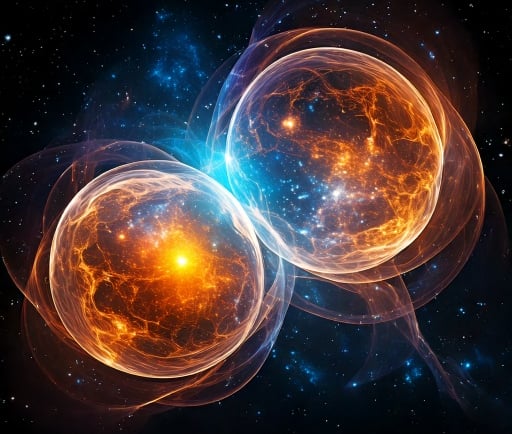The Great Eruption of Eta Carinae: A Stellar Phenomenon


Introduction to Eta Carinae
Eta Carinae, often referred to simply as the Eta Car, is a fascinating celestial object located in the Carina constellation. This massive star system is particularly renowned for its unique behavior, including the famous outburst known as the Great Eruption that occurred in the 1840s. Understanding the circumstances surrounding this event provides valuable insights into the life cycles of massive stars and their evolutionary processes.
The Great Eruption: A Historical Perspective
The Great Eruption of Eta Carinae is a significant astrophysical event that has captured the attention of astronomers for generations. Observed initially in the mid-19th century, this eruption saw the star expand dramatically and undergo a temporary increase in brightness. During this time, Eta Carinae became one of the brightest stars in the night sky, outshining many of its counterparts. This event is theorized to be the result of a massive outflow of material from the star's surface, altering its position on the Hertzsprung-Russell diagram, a crucial tool for classifying stars based on their luminosity and temperature.
The Mystery of Eta Carinae's Outburst
Despite extensive research, the exact mechanisms behind the Great Eruption remain a topic of debate among scientists. One prevailing theory suggests that Eta Carinae is a binary star system, comprising at least two massive stars that interact gravitationally. Such interactions could lead to periodic outbursts as material is exchanged between the stars, causing fluctuations in brightness and activity. Observations have revealed that Eta Carinae is surrounded by a large nebula, known as the Homunculus Nebula, a remnant of this monumental event, adding another layer to the complexity of this astronomical phenomenon.
Modern Observations and Research
In recent years, advancements in technology have allowed astronomers to observe Eta Carinae with unprecedented clarity. High-resolution imaging and spectroscopy have provided critical data to support theories regarding its outburst. Ongoing studies aim to monitor its evolution and search for clues to predict future eruptions, as this star has a history of irregular behavior that can challenge our understanding of stellar dynamics.
Conclusion
Eta Carinae remains one of the most intriguing subjects in astrophysics. The Great Eruption of the 1840s highlights the complexities of stellar life cycles and the dynamic interplay of immense gravitational forces within star systems. As we continue to explore and investigate this remarkable star, we not only enhance our knowledge of the cosmos but also deepen our appreciation for the extraordinary events that shape our universe.
